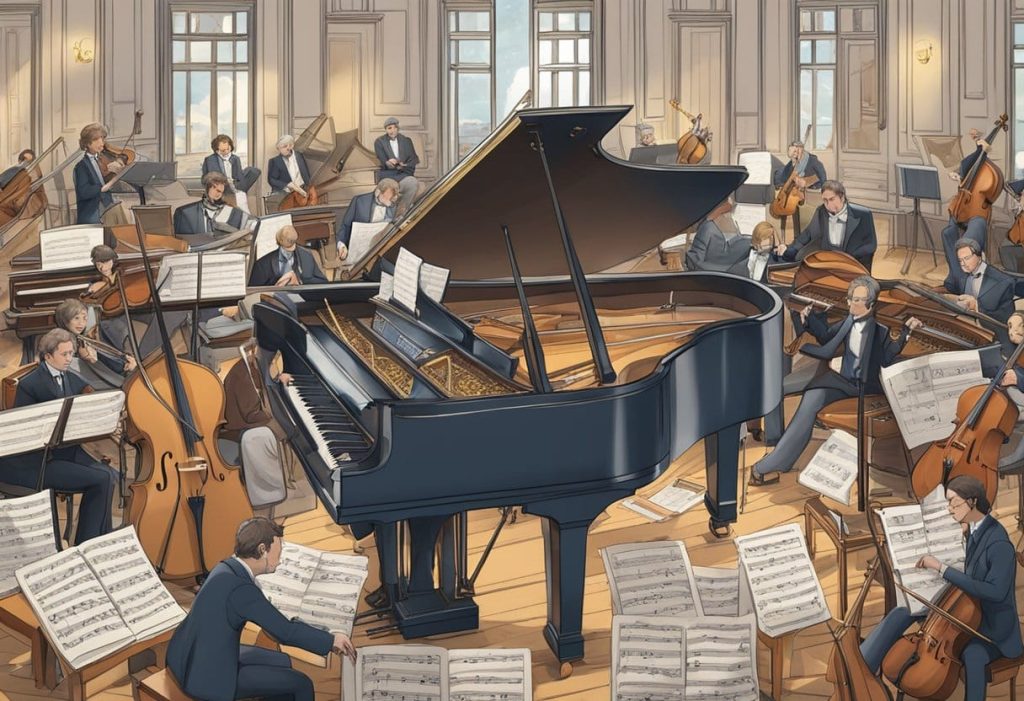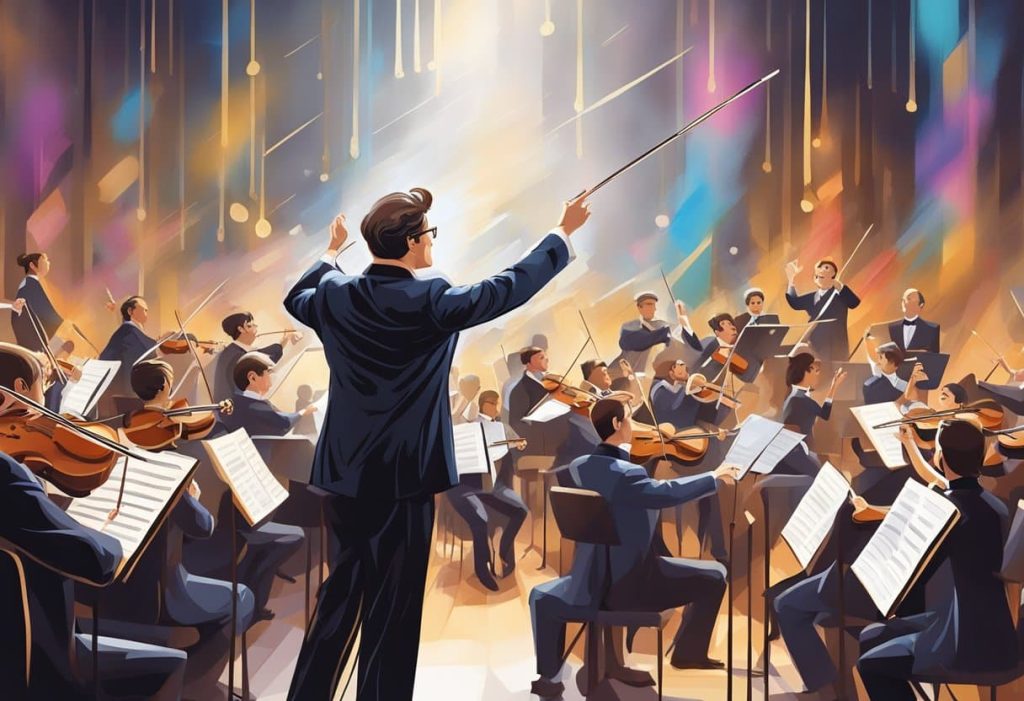Blog
The Power of Piano Music in Film and TV Scores
Piano music has a unique and undeniable power in the world of film and television scores. Its versatility, emotional depth, and distinct tonal qualities make it an essential tool for composers to evoke powerful emotions and tell stories through sound. Whether it’s a haunting melody underscoring a dramatic moment or a light, playful tune bringing a sense of joy, the piano has the ability to complement the visual narrative and amplify the emotional resonance of a scene. In this article, we will explore the significant role of piano music in film and TV scores, how it influences audiences, and some of the most iconic examples of piano-driven compositions.
1. The Piano’s Versatility in Film Scoring
One of the key reasons the piano is so widely used in film and TV scores is its incredible versatility. The piano can produce a vast range of sounds, from delicate and soft to powerful and dramatic. It can create a sense of intimacy with a solo melody or build a grand, cinematic atmosphere when used in conjunction with orchestral arrangements.

How it’s used:
- Solo performances: When featured alone, the piano often serves as a reflective or emotional centerpiece. A single piano note or chord can leave a lasting impression, creating a mood of melancholy, nostalgia, or introspection.
- With orchestration: In many cases, the piano is part of a larger ensemble, adding texture and layers to a score. It can provide harmonic support, fill in musical gaps, or even serve as a contrasting element to other instruments.
2. The Emotional Range of Piano Music
Piano music has a remarkable ability to evoke a wide range of emotions. The dynamics of the instrument—how softly or loudly it’s played—are ideal for drawing out emotional responses from the audience. A gentle, slow-moving piano piece can create a sense of vulnerability or sadness, while a fast, rhythmic piano sequence can build tension or excitement.
How it’s used:
- Sadness and grief: Slow, minor key piano music is often associated with sadness and loss. The simplicity of a solo piano can make the emotional weight of a scene feel even more poignant.
- Joy and hope: On the other hand, upbeat, major key piano music can bring a sense of optimism, joy, or playfulness. A lively piano motif can uplift the mood of a scene, bringing lightness and energy.
- Tension and suspense: The piano can also be used in more dramatic ways to create a sense of urgency, unease, or mystery. Fast-paced, staccato piano chords can heighten the tension and anticipation, keeping the audience on the edge of their seats.
3. Piano Music as a Character Motif
In film and TV scores, piano music is often used to represent a specific character or theme. This technique is known as a musical motif, where a recurring piano melody or chord progression symbolizes a particular character’s emotional state, journey, or identity. By using piano motifs, composers can reinforce character development and add depth to the storytelling.
How it’s used:
- Character themes: A piano motif can be associated with a character, reappearing throughout the film or TV series as their emotional journey unfolds. For instance, a soft, gentle piano theme might represent a character’s innocence, while a more intense, dissonant motif could signify their internal conflict or transformation.
- Symbolism: In some cases, piano music may represent an abstract concept, such as love, loss, or memory. In this way, the piano becomes a symbolic vehicle for conveying complex themes that are central to the narrative.
4. Piano Music in Famous Film Scores
Throughout the history of film, the piano has played a pivotal role in some of the most memorable and iconic soundtracks. Some composers have made piano music a central element of their work, using it to tell stories that resonate with audiences long after the credits roll.
Notable piano-driven scores:
- “The Piano” (1993) – Michael Nyman: The score for The Piano is one of the most celebrated examples of piano music in film. Michael Nyman’s minimalist piano compositions perfectly capture the raw emotion and complexity of the film’s characters. The haunting, repetitive motifs reflect the isolation and inner turmoil of the protagonist, Ada, played by Holly Hunter.
- “Schindler’s List” (1993) – John Williams: John Williams’ score for Schindler’s List features the poignant piano playing of the renowned musician Itzhak Perlman. The music, particularly the piano-led theme, helps convey the immense sorrow and tragedy of the Holocaust. The piano’s delicate and sorrowful tones underline the human cost of the events depicted in the film.
- “The Social Network” (2010) – Trent Reznor and Atticus Ross: The piano plays a significant role in the haunting, electronic score of The Social Network, composed by Trent Reznor and Atticus Ross. While much of the score is driven by digital sounds and synthesizers, the inclusion of piano motifs adds a layer of emotional depth, particularly in scenes involving Mark Zuckerberg’s internal conflict and the growing distance between him and his friends.
- “La La Land” (2016) – Justin Hurwitz: In La La Land, the piano is a central instrument in the jazz-inspired score. The use of piano, especially in the film’s iconic opening number, “Another Day of Sun,” helps set the tone of the movie, balancing elements of romance, ambition, and the bittersweet nature of pursuing dreams in a city like Los Angeles.
- “The Legend of 1900” (1998) – Ennio Morricone: Ennio Morricone’s score for The Legend of 1900 features beautiful piano solos that reflect the film’s central theme of a man who has never left the confines of an ocean liner. The piano’s role in the score emphasizes the character’s isolation and connection to the music he creates.
5. Piano Music in TV Scores
While the piano is often a dominant feature in film scores, it also plays a vital role in television. In TV shows, piano music is used to set the mood, highlight key moments, and develop character arcs, much like in film. Given the episodic nature of TV shows, composers have the opportunity to create recurring piano motifs that evolve over time.

How it’s used:
- Creating atmosphere: In TV shows, piano music is often used to create a specific atmosphere for a scene or episode. For example, a light piano theme might accompany scenes of daily life, while more dramatic, dissonant piano music could underscore moments of tension or danger.
- Character development: As in film, TV scores often use piano motifs to reflect the emotional growth of characters. For example, the piano music in Big Little Lies was used to convey the underlying tension and complexity of the characters’ relationships, adding an extra layer of depth to the show’s drama.
6. The Piano’s Role in Enhancing Storytelling
Piano music is often used to complement the visual elements of a film or TV show, creating a synergy between the audio and visual components. A well-timed piano piece can heighten the emotional impact of a scene, amplify key moments, and even change the way audiences perceive the visuals.
How it enhances storytelling:
- Emotional impact: Piano music often has a strong emotional pull, especially in scenes involving characters’ personal struggles or triumphs. Whether it’s a gentle, melancholic theme or a bold, fast-paced melody, the piano can deeply affect the audience’s emotional response, drawing them into the narrative.
- Reinforcing visual imagery: In many cases, piano music is used to underscore the visual elements of a scene, heightening the emotional effect. For instance, a quiet, reflective piano piece can amplify the emotional gravity of a character’s solitary moment, while an intense, fast-paced piano theme can create a sense of urgency during an action-packed sequence.
7. Piano Music as a Tool for Memory and Nostalgia
The piano has a special way of triggering memories and nostalgia. Many composers use the piano to evoke a sense of time and place, helping to transport the audience to a different era or moment in the character’s journey.
How it’s used:
- Flashbacks and memory: Piano themes often appear in flashbacks, helping to signal a shift in time or a return to a past event. The piano’s ability to evoke nostalgia and sentimentality makes it an ideal instrument for these moments.
- A sense of timelessness: The timeless quality of piano music can also evoke a sense of universality, resonating with audiences across different generations.
Conclusion
The piano is more than just an instrument—it’s a powerful storytelling tool that enhances the emotional depth of film and TV scores. Whether it’s evoking sadness, joy, suspense, or nostalgia, piano music has the unique ability to capture the essence of a story and make it resonate with the audience. From the minimalist compositions of The Piano to the jazz-infused melodies of La La Land, piano-driven scores continue to shape the way we experience film and television, proving that the piano remains a cornerstone of cinematic and televisual music.


